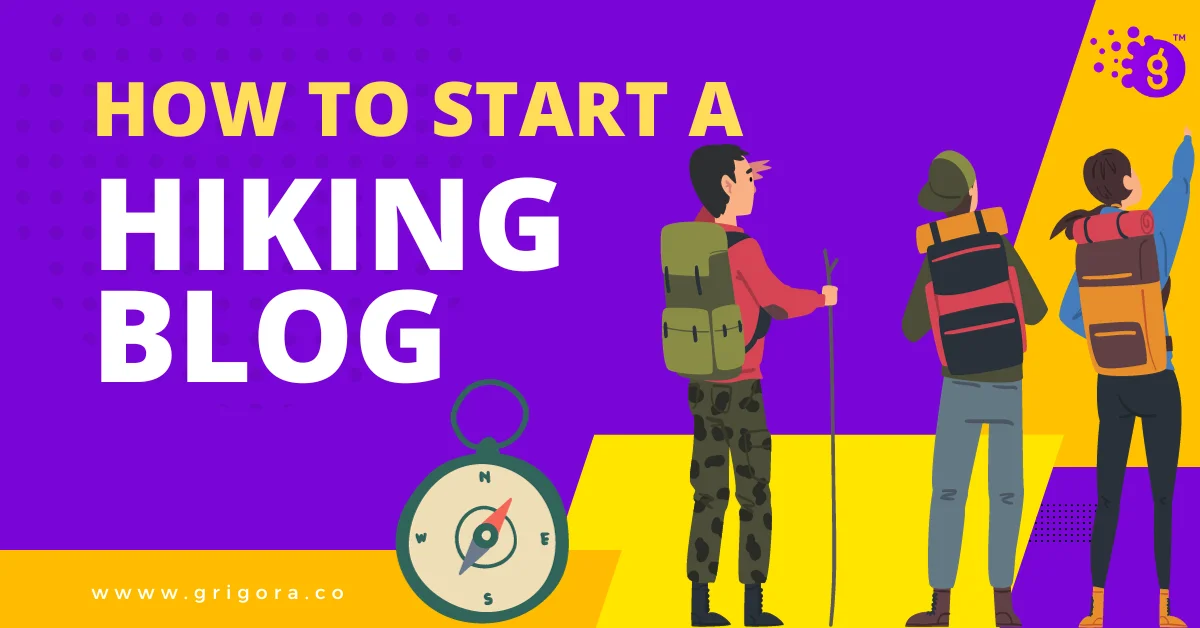Introduction
The Growing Popularity of Hiking and Outdoor Blogs
In recent years, there has been a significant surge in the popularity of hiking and outdoor blogs. With the increasing awsareness of the benefits of outdoor activities for both physical and mentals well-being, more people are seeking information, tips, and inspiration online. Hiking blogs have become a go-to resource for avid hikers and beginners alike, offering a wealth of knowledge from trail guides to gear reviews.
Why Starting a Hiking Blog Can Be Rewarding
Starting a hiking blog can be an incredibly rewarding experience. Not only does it provide a platform to share your passion for the great outdoors, but it also allows you to connect with a like-minded community. You can share your hiking adventures, offer valuable tips, and even turn your passion into a profitable business through various monetization strategies.
"In every walk with nature, one receives far more than he seeks."
John Muir
12 Steps to Start a Hiking Blog
Step 1: Define Your Blog's Purpose Decide what you want to achieve with your hiking blog. Are you looking to share personal adventures, provide hiking guides, or review gear?
Step 2: Identify Your Target Audience Determine who your blog will cater to. Are you targeting casual hikers, experienced mountaineers, or a mix of both?
Step 3: Choose a Blogging Platform Select a platform to host your blog. WordPress, Blogger, and Grigora are popular choices. Grigora is particularly user-friendly and offers robust features tailored for bloggers.
Step 4: Pick a Domain Name and Hosting Service Choose a domain name that reflects your blog's focus and a reliable hosting service to keep your blog accessible.
Step 5: Design Your Blog Pick a theme that complements the outdoor and adventure aesthetics. Make sure the design is mobile-responsive and user-friendly.
Step 6: Create Essential Pages Include an 'About' page to share your background in hiking, a 'Contact' page for collaboration and feedback, and a 'Resources' page for recommended gear, trails, and books.
Step 7: Plan Your Content Decide on the types of posts you'll create. This could range from trail guides and gear reviews to personal hiking stories.
Step 8: Engage with Your Audience Encourage comments, discussions, and feedback. Utilize social media and newsletters to keep your audience updated.
Step 9: Monetize Your Blog Consider affiliate marketing for outdoor gear, selling e-books, or offering sponsored posts as ways to generate income from your blog.
Step 10: Promote Your Blog Implement SEO strategies, guest post on other outdoor websites, and engage in online hiking communities to increase your blog's visibility.
Step 11: Maintain Your Blog Regularly update your blog with new content, and keep an eye on seasonal topics and trending trails to keep your audience engaged.
Step 12: Review and Update Regularly review your blog's performance through analytics, and make necessary updates to improve user engagement and SEO.
Identifying the Purpose of Your Hiking Blog
Personal Adventure Logs vs. Hiking Guides
| Criteria | Personal Adventure Logs | Hiking Guides |
|---|---|---|
| Content Focus | Personal experiences and stories | Instructional and informational |
| Audience Engagement | Emotional, storytelling | Educational, how-to steps |
| Writing Style | First-person narrative | Second or third person, factual |
| Visuals | Personal photos, maybe some videos | Maps, step-by-step photos, infographics |
| Length | Variable, often longer | Usually concise, to-the-point |
| SEO Keywords | Personal, less targeted | Specific, targeted (e.g., "how to hike") |
| Monetization | Sponsorships, personal brand | Affiliate links for gear, paid guides |
| Updates | As adventures happen | Periodic updates for accuracy |
| Credibility | Based on personal experience | Requires expertise or thorough research |
| Community Involvement | Comments, personal stories from readers | Questions, tips, additional information |
Incorporating Gear Reviews and Travel Tips
Another aspect to consider is the type of content you want to include. Gear reviews are incredibly popular and can be a good source of income if you use affiliate links. Travel tips, such as how to reach trailheads or where to stay nearby, can also be valuable for your readers. The key is to offer content that is both engaging and useful.
Choosing Your Target Audience
Casual Hikers vs. Experienced Mountaineers
| Criteria | Casual Hikers | Experienced Mountaineers |
|---|---|---|
| Skill Level | Beginner to Intermediate | Advanced to Expert |
| Trail Difficulty | Easy to Moderate | Moderate to Extremely Difficult |
| Equipment | Basic hiking gear (boots, backpack) | Specialized gear (crampons, ice axes) |
| Duration of Hikes | A few hours to a day | Multiple days to weeks |
| Terrain | Well-marked trails, gentle slopes | Steep, often unmarked or technical terrain |
| Preparation | Minimal planning required | Extensive planning and training |
| Safety Measures | Basic first aid kit | Comprehensive first aid and survival gear |
| Goal | Leisure, exercise, nature appreciation | Skill mastery, peak-bagging, exploration |
| Community Involvement | Generally hikes in groups or alone | Often part of climbing or hiking clubs |
| Knowledge | Basic outdoor and trail etiquette | Advanced skills in navigation and survival |
Local, National, or Global Focus
Another important consideration is the geographical scope of your blog. Do you want to focus on local trails in your area, or are you planning to cover hikes on a national or even global scale? A local focus can help you become an authority in your specific region, while a broader scope can attract a larger, more diverse audience. The choice will depend on your own hiking experiences and the audience you wish to serve.
Selecting a Blogging Platform
Grigora, WordPress, Blogger, and Other Options
Choosing the right blogging platform is a pivotal step in starting your hiking blog. There are various options available, such as WordPress, Blogger, and Joomla, each with its own set of features and limitations. WordPress is often recommended due to its flexibility, extensive plugin options, and active community support. Blogger is another good option for beginners due to its simplicity.
Why Grigora is an Ideal Choice for Hiking Blogs
If you're looking for a platform that offers a seamless blend of usability and customization, Grigora is an excellent choice. Grigora empowers users to create stunning websites and manage content effectively. It offers a wide range of use cases, serving personal bloggers, small businesses, and freelancers. With its user-friendly interface, customization options, and robust security measures, Grigora stands as a transformative platform that unlocks endless possibilities for creativity, growth, and success in the online world.
Setting Up Your Hiking Blog
Domain Name and Hosting
Choosing a domain name that reflects your blog's focus is crucial. Your domain name should be easy to remember, spell, and should ideally include keywords related to hiking or the outdoors. Services like GoDaddy or Namecheap can help you find and register your domain.
Selecting a reliable hosting service is equally important. Your hosting service will store all the files and data for your blog, so you need a service that is reliable, fast, and offers good customer support. Companies like Bluehost, SiteGround, and HostGator are popular choices.
Blog Design and Layout
The design of your blog should complement the outdoor and adventure aesthetics that will be prevalent in your content. Themes with earthy tones, large image headers, and clean fonts often work well for hiking blogs. Grigora offers a variety of templates that are perfect for hiking blogs, making it easier for you to get started.
Essential Pages to Include
Your blog should have a few essential pages to make it complete and professional.
About Page: Your Hiking Background and Expertise
This is where you introduce yourself and your qualifications or experience in hiking. It adds credibility and a personal touch to your blog.
Contact Page: Encouraging Collaboration and Feedback
A contact page makes it easy for readers and potential collaborators to get in touch with you. It's also a good place to include social media links.
Resources Page: Recommended Gear, Trails, and Books
This can be a treasure trove of resources for your readers, offering recommendations for gear, favorite trails, and useful books or courses on hiking.
Creating Content for Your Hiking Blog
Types of Posts: Trail Guides, Gear Reviews, Personal Stories
The backbone of your hiking blog will be the content you produce. You can diversify your content by including trail guides with detailed maps and tips, gear reviews to help your readers make informed purchases, and personal stories to share your own hiking experiences and lessons learned.
Photography and Videography Tips
Visual content is key when it comes to a hiking blog. High-quality photos and videos can make your blog posts more engaging and shareable. You don't necessarily need a high-end camera; even smartphones can capture great outdoor shots these days. Consider taking a basic photography course to enhance your skills.
Staying Authentic and Credible
Authenticity is crucial in the blogging world. Your readers will trust you more if you are honest in your reviews and share both the highs and lows of your hiking adventures. Always disclose any sponsorships or affiliate links to maintain transparency.
Engaging with Your Audience
Encouraging Comments and Discussions
One of the best ways to engage with your audience is by encouraging comments and discussions on your blog posts. This not only helps you understand what your readers are interested in but also builds a community around your blog. Make sure to respond to comments to keep the conversation going.
Social Media and Newsletters
Social media platforms like Instagram and Facebook are excellent tools for promoting your hiking blog and engaging with your audience. Regular updates, behind-the-scenes looks, and special announcements can all be shared via social media. Newsletters are another effective way to keep your readers updated on new posts or upcoming hiking trips.
Collaborating with Other Outdoor Bloggers or Brands
Collaboration can bring fresh perspectives and increased visibility to your blog. Whether it's guest posting on another outdoor blog or partnering with hiking gear brands, collaborations can provide value to your readers and help you reach a broader audience.
Monetizing Your Hiking Blog
Affiliate Marketing for Outdoor Gear
Affiliate marketing is one of the most straightforward ways to start earning money from your hiking blog. You can recommend hiking gear, clothing, or accessories and earn a commission for every sale made through your unique affiliate link. Make sure to disclose any affiliate relationships to maintain trust with your readers.
Selling E-books or Hiking Guides
If you have extensive knowledge about hiking trails, techniques, or gear, consider compiling this information into an e-book or a detailed hiking guide. These can be sold directly on your blog or through platforms like Amazon Kindle.
Sponsored Posts and Partnerships
Brands and companies related to outdoor activities may be interested in sponsoring posts or forming partnerships with you. This could involve reviewing a product, hosting a giveaway, or writing a sponsored article. Always disclose sponsored content to your readers and only partner with brands that align with your blog's values and focus.
Promoting Your Hiking Blog
SEO Strategies for Hiking Blogs
Search Engine Optimization (SEO) is crucial for increasing the visibility of your blog. Utilize keyword research tools to identify terms that your target audience is searching for. Incorporate these keywords naturally into your blog posts, meta descriptions, and URLs.
Guest Posting on Outdoor Websites and Forums
Guest posting is an excellent way to reach a broader audience. Write articles or guides for established outdoor websites or forums and include a link back to your blog. This not only drives traffic but also helps in building backlinks, which are essential for SEO.
Utilizing Social Media Platforms
Social media platforms like Instagram, Facebook, and Twitter are invaluable tools for promoting your hiking blog. Share snippets, photos, or interesting facts from your blog to engage your audience. You can also join hiking and outdoor groups to share your expertise and subtly promote your blog.
Maintaining and Updating Your Blog
Creating a Content Calendar
A content calendar helps you plan and organize your posts. It ensures that you're consistently publishing new content, which is crucial for retaining your audience and improving SEO. Use tools like Google Calendar or specialized blogging software to track post ideas, publishing dates, and promotional activities.
Seasonal Topics and Trending Trails
Keeping your blog updated with seasonal topics can attract a variety of readers. For example, write about winter hiking tips during the colder months and beachside trails in the summer. Stay updated on trending trails or hiking news and write timely articles to attract more visitors.
FAQs
How often should I update my hiking blog?
Consistency is key when it comes to blogging. Aim to update your blog at least once a week to keep your audience engaged. However, the frequency can vary depending on the type of content you're producing. For instance, detailed trail guides may take longer to create than quick gear reviews.
Do I need professional hiking credentials to start a blog?
While professional credentials can add credibility, they are not a necessity. What matters most is your passion for hiking and your ability to convey your experiences in a way that is both engaging and informative.
How do I handle controversial outdoor topics like land use and conservation?
If you choose to tackle controversial topics, make sure to do thorough research and present balanced views. Your blog can be a platform for meaningful discussion, but it's important to approach sensitive topics with care and consideration.
What are the best practices for SEO on a hiking blog?
SEO is crucial for increasing your blog's visibility. Use relevant keywords, meta descriptions, and high-quality images to improve your blog's SEO. Regularly update your content and consider guest posting on other blogs to build backlinks.
How can Grigora assist in building and maintaining a hiking blog?
Grigora offers a user-friendly interface, robust security measures, and excellent customization options, making it an ideal choice for your hiking blog. With its built-in SEO and marketing tools, Grigora can help you reach a wider audience and monetize your blog effectively.
Additional Resources
Top Hiking Blogs for Inspiration
If you're looking for inspiration, there are numerous hiking blogs that can provide valuable insights. Websites like 'The Hiking Life' and 'Trail to Peak' offer a mix of trail guides, gear reviews, and personal stories that can help you shape your own blog.
Books on Outdoor Writing and Photography
Investing in good resources can significantly improve your blogging skills. Books like "The Writer's Guide to Crafting Stories About Nature" and "Outdoor Photography Masterclass" are excellent starting points.
Online Courses on Blogging and Outdoor Skills
Online courses can provide structured learning experiences. Websites like Udemy and Coursera offer courses on blogging, photography, and even outdoor survival skills that can add value to your blog.
Conclusion
The Joy and Benefits of Sharing Your Hiking Experiences
Starting a hiking blog is not just about sharing your adventures; it's about creating a community of like-minded individuals. Your blog can inspire others to explore the great outdoors and take up hiking as a hobby or even a lifestyle.
Next Steps for Growing Your Blog and Community
Once your blog is up and running, the journey doesn't end there. Continuous improvement, regular updates, and community engagement are crucial for the growth of your blog. With platforms like Grigora, you have a plethora of tools at your disposal to make your blog a success.



